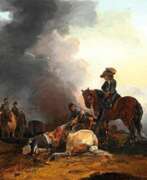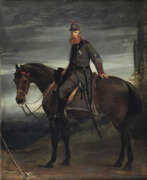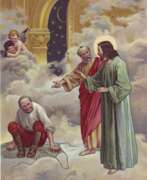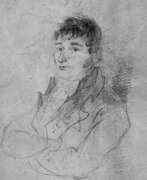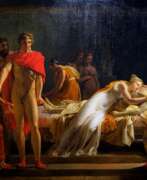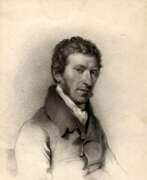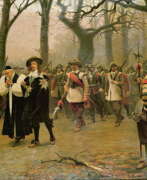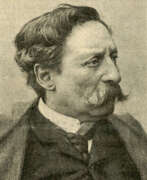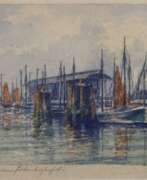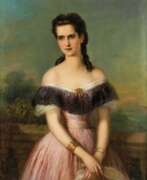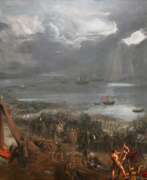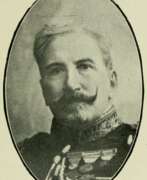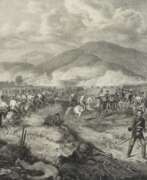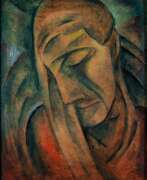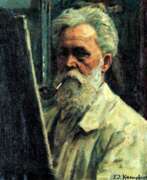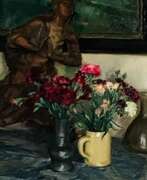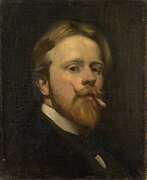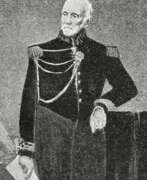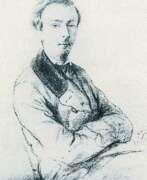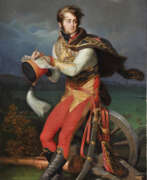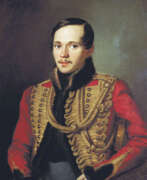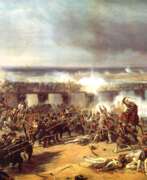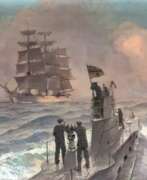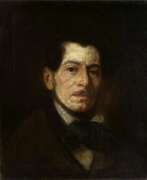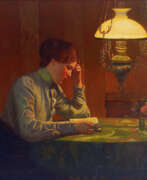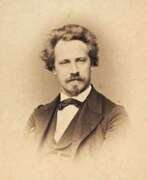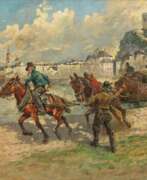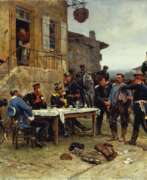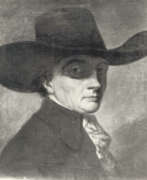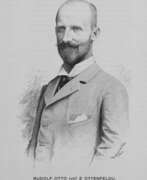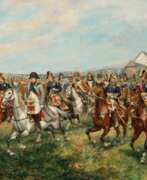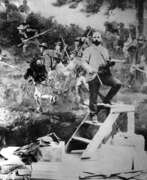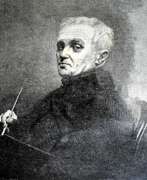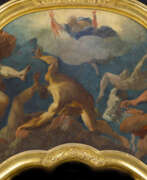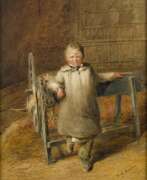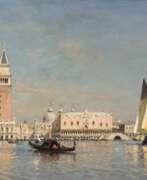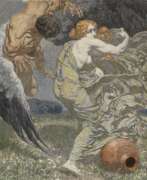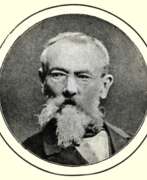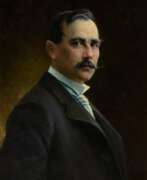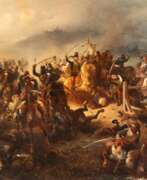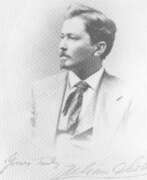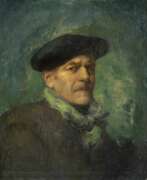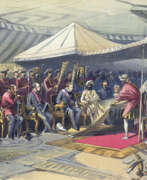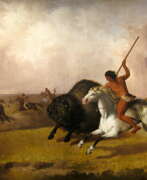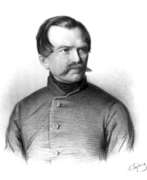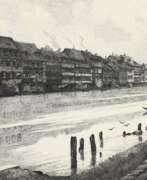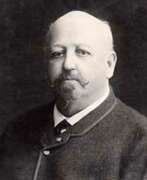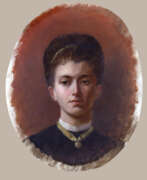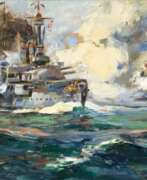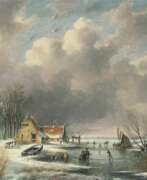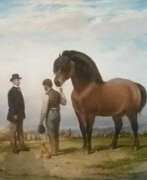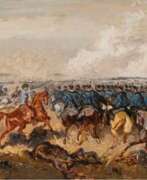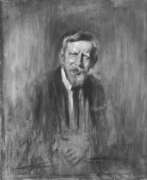Batalists 19th century
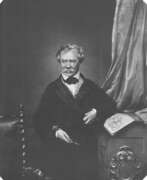

Albrecht Adam was a Bavarian painter of the first half of the 19th century. He is best known for the fact that as a member of Napoleon's Grand Army he took part in the campaign against Russia in 1812 as the official artist of the headquarters of the IV (Italian) Corps. Throughout the campaign, the artist made sketches and drawings, capturing many of the important events of the campaign. Later, many of these sketches became the basis for full-fledged paintings, and to subjects from the Napoleonic wars, which he witnessed, Adam addressed until the end of his very long life.
Albrecht Adam was also the author of memoirs, in which he described in detail the Battle of Borodino and a number of other key events of the War of 1812.
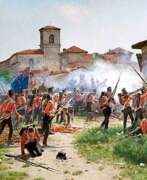

James Prinsep Beadle was an English painter of historical and military scenes.Beadle first exhibited at the Royal Academy in 1884 and also at the Paris Salon. Five years later, he was awarded a bronze medal at the Paris Exposition Universelle. Growing up in a military family, the artist was particularly attracted to military subjects.
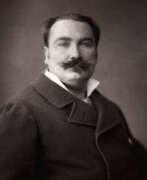

Etienne Prosper Berne-Bellecour was a French artist. He was a painter, illustrator, and engraver who specialized in military scenes, battlefields, and portraits of soldiers. He is considered one of the most important French artists of the 19th century.
Berne-Bellecour began his career as an illustrator for French newspapers and magazines. He later became a painter, and in 1863 he exhibited his first painting at the Salon in Paris. In 1873, he became a member of the Académie des Beaux-Arts.
Berne-Bellecour was known for his highly detailed and realistic paintings of military life. He often depicted battle scenes with soldiers in uniform, and his attention to detail was highly admired. He was also known for his portraits of military leaders, including Napoleon III and Marshal MacMahon.
Berne-Bellecour continued to paint and exhibit his work throughout his life.
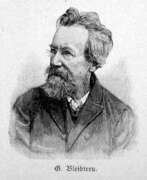

Georg Bleibtreu was a German painter of the second half of the 19th century. He is known as a historical painter, famous for his battle paintings.
Georg Bleibtreu is considered a representative of the Dusseldorf school of art. Critics have noted his realistic conscientiousness and meticulous attention to detail in his paintings.
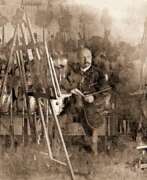

Louis Braun was a German painter of the second half of the 19th and early 20th centuries. He is known as a painter and teacher and is considered one of the most famous German battle painters.
Louis Braun was a war painter for the Austrian army during the Austro-Prussian-Danish War in 1864, and he created several battle paintings commissioned by Emperor Franz Joseph I of Austria. He also accompanied Prussian troops during the Franco-Prussian War of 1870-1871, creating paintings on this theme. Brown's panoramic painting "Battle of Sedan" was a great success, for which the artist was awarded the title of professor at the Academy of Munich in 1902.
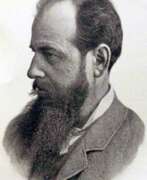

Joseph-Casimir Konstantinovich Budkevich (Russian: Иосиф-Казимир Константинович Будкевич) was a Ukrainian painter and draftsman, born on April 18, 1841, in Kyiv. Known for his battle scenes and landscapes, Budkevich studied at the Imperial Academy of Arts in Saint Petersburg, where he received several medals for his works. In 1873, he was awarded the title of Class Artist 3rd Degree.
Budkevich traveled to Italy, France, Spain, and Palestine to refine his skills. In the late 1870s and 1880s, he taught at the Kyiv Drawing School, where one of his students was Mykola Pymonenko. From 1887 to 1895, he was a member of the Kyiv Society of Art Exhibitions.
Among his notable works are "Pilgrim at the Monastery Wall" (1883) and "Jerusalem" (1894). These paintings are exhibited at the Kyiv Museum of Russian Art and the Pskov Art Gallery. His work is highly valued by collectors and art experts for its uniqueness and mastery.
If you want to receive notifications about new arrivals and auctions related to Joseph-Casimir Budkevich's work, subscribe to our updates. We will keep you informed about new sales and events related to his legacy.
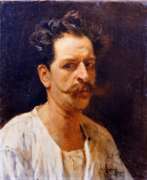

Michele Cammarano was an Italian realist painter. He is the author of numerous paintings in the battle genre. He studied painting at the Academy of Fine Arts in Naples.
In March 1870, during a trip to Paris, the artist met Gustave Courbet, whose work was close to his own views on art.
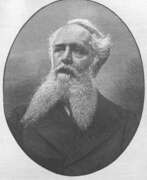

Wilhelm Camphausen was a mid-nineteenth-century German painter specializing in historical and battle scenes. He was a representative of the Dusseldorf school of painting and in 1859 became professor of painting at the Dusseldorf Academy of Fine Arts.
Camphausen accompanied Prussian troops during the Schleswig-Holstein military campaign in 1864 and produced several paintings with battle scenes that made him a well-known representative of patriotic historical art in Germany. Camphausen also painted many portraits of German princes, famous soldiers, and statesmen. During the Franco-Prussian War in 1870 he served as an official war painter in the German army.
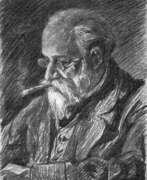

Adolf Iosifovich Charlemagne (Russian: Адольф Иосифович Шарлемань) was a renowned Russian painter, born in 1826 in Saint Petersburg. He excelled in historical, genre, and battle scenes, deeply influenced by his artistic lineage—his father was an architect and his grandfather a sculptor. Educated at the Imperial Academy of Arts under Fyodor Bruni and Bogdan Willewalde, Charlemagne's works are celebrated for their historical accuracy and intricate details.
Charlemagne's notable works include "The Capture of Kazan by Ivan the Terrible" and "The Battle of Kulikovo," which vividly capture significant moments in Russian history. His paintings are known for their meticulous attention to detail, dramatic compositions, and ability to convey the emotional intensity of historical events. These masterpieces are housed in prestigious Russian museums, showcasing his contributions to Russian cultural heritage.
Throughout his career, Charlemagne received numerous accolades, including the titles of Academician and Professor at the Imperial Academy of Arts. His dedication to historical accuracy and artistic excellence made him a prominent figure in Russian art.
For collectors and enthusiasts, owning a piece by Adolf Iosifovich Charlemagne means acquiring a significant part of Russian history. To stay updated on new product sales and auction events related to Charlemagne's works, sign up for our updates today.
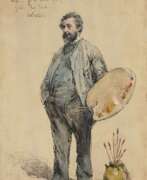

Henri Georges Jacques Chartier was a French martial artist who painted on recent French military history. In 1902, Chartier received a bronze medal at the annual Salon of French Artists.
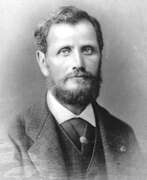

Stanisław Chlebowski was a Polish orientalist painter.
His travels in the Middle East and North Africa, where he lived and worked for many years, had a great influence on Chlebowski's work. His paintings often feature scenes of daily life in these regions, including depictions of markets, street scenes, and traditional clothing.
Today, Chlebowski's paintings can be found in many public and private collections, including the National Museum in Warsaw and the National Museum in Krakow.
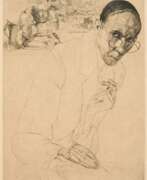

Jules De Bruycker, a Belgian graphic artist and etcher, is renowned for his depictions of Ghent, cathedrals, war scenes, and book illustrations. He achieved technical virtuosity in his prints and was considered one of Belgium's greatest etchers. His work showcased crowds and dramatic lighting, providing an intimate view of daily life in Ghent. De Bruycker's influences ranged from Flemish traditions to artists like Brueghel, Bosch, and Ensor. His later work included prints of cathedrals, figure studies, and sensuous nudes. De Bruycker's art greatly influenced his contemporaries, including Gustave van de Woestijne.
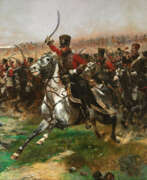

Jean-Baptiste Édouard Detaille was a French academic painter and military artist noted for his precision and realistic detail. He was regarded as the "semi-official artist of the French army". Detaille made his debut as an artist at the Salon—the official art exhibition of the Académie des Beaux-Arts—of 1867 with a painting of Meissonier's studio. At the Salon of 1868, he exhibited his first military painting, The Drummers Halt, which was based solely on his imagination of the French Revolution. Detaille enlisted in the 8th Mobile Bataillon of the French Army when the Franco-Prussian War broke out in 1870; by November he was seeing and experiencing the realities of war. This experience allowed him to produce his famed portraits of soldiers and historically accurate depictions of military manoeuvres, uniforms, and military life in general. He eventually became the official painter of the battles. He published a book called L'Armée Française in 1885, which contains over 300 line drawings and 20 color reproductions of his works.
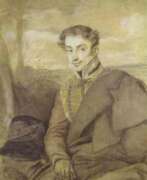

Alexander Ivanovich Dmitriev-Mamonov (Russian: Александр Иванович Дмитриев-Мамонов) was a Russian military commander and battle painter, known for his significant contributions both in the military and in the arts. Born on December 24, 1787, in Saint Petersburg, he was the son of Major-General Ivan Dmitriev-Mamonov. His early career saw him serving as an actuary at the Collegium of Foreign Affairs and later at the State Chancellery.
Dmitriev-Mamonov joined the People's Militia in 1812, rising to the rank of Lieutenant and participating in key battles such as Borodino and Krasnoi during the Napoleonic Wars. By 1823, he was promoted to Colonel and subsequently to Major-General in 1831, commanding various cavalry regiments. Apart from his military endeavors, Dmitriev-Mamonov was also an accomplished amateur artist. He co-founded the Imperial Society for the Encouragement of the Arts and established a drawing school in 1827. His battle sketches and watercolors are prominently displayed in Tsarskoye Selo.
In 1835, he transitioned to civil service, becoming a State Councillor at the Ministry of Internal Affairs. His notable awards include the Order of Saint Vladimir, Order of Saint Anna, and the Medal "For the Capture of Paris." Dmitriev-Mamonov's legacy is preserved through his artistic works and his contributions to Russian military history.
For more updates on auctions and sales related to Alexander Ivanovich Dmitriev-Mamonov's works, sign up for our newsletter to stay informed about new product sales and auction events.
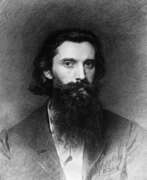

Nikolai Dmitrievich Dmitriev-Orenburgsky (Russian: Николай Дмитриевич Дмитриев-Оренбургский) was a Russian painter born in 1837 in Nizhny Novgorod. He is renowned for his battle scenes and depictions of Russian village life. Dmitriev-Orenburgsky studied at the Imperial Academy of Arts in St. Petersburg, where he was part of the ‘revolt of fourteen’—a group of students who challenged the conservative academic traditions of their time.
Dmitriev-Orenburgsky's work often reflected the harsh realities of rural Russian life, with a notable melancholic undertone even in his more cheerful scenes. His involvement in the Russo-Turkish War (1877-78) profoundly influenced his art, leading to several acclaimed battle paintings. Some of his significant works include "General M. D. Skobelev on his Horse" and "Siege of Plevna," which are housed in prestigious collections such as the Hermitage Museum and the Russian Museum.
His genre paintings, like "Sunday in a Village" and "Fire in a Village," capture the essence of Russian peasant life with striking realism and emotional depth. Dmitriev-Orenburgsky's legacy is celebrated for its historical significance and artistic excellence, making his works highly sought after by collectors and exhibited in major galleries worldwide.
Stay informed about upcoming sales and auctions featuring works by Nikolai Dmitrievich Dmitriev-Orenburgsky by signing up for our updates. Subscribe now to receive alerts on new product sales and auction events related to this distinguished artist.
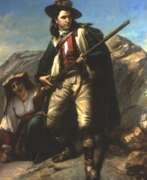

Johannes Hinderikus Egenberger was a Dutch painter, photographer and art educator. From 1840 to 1848, he studied at the Royal Academy of Fine Arts in Amsterdam with Jan Willem Pieneman. During these years, he focused on painting scenes from Dutch history. In 1854, he collaborated with Barend Wijnveld to produce a massive canvas depicting the heroic defense of Haarlem led by Kenau Hasselaer in 1573. Later, he would turn to landscapes, domestic scenes and portraits, including a series for the Rijksuniversiteit. In 1857, he was appointed Headmaster of the Academie Minerva in Groningen. In addition to his work there, he became a photographer and, in 1864, opened the first photography studio in Groningen. The following year, he resigned his position as Headmaster to devote himself entirely to photography.
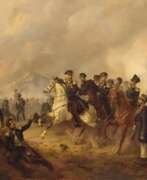

Ludwig Elsholtz was a German painter of the first half of the 19th century. He is known as a battle painter.
Elsholtz began his career with genre paintings, mostly battle scenes, which attracted attention with the artist's excellent observation and exquisite execution. Later he moved on to creating larger and more imaginative images. When the master had health problems, he turned to watercolor painting. He became famous for his large-scale canvases with battle scenes, such as "The Battle of the Nations at Leipzig" and "The Battle of Waterloo". In addition to battle scenes, Elsholtz also created genre paintings.
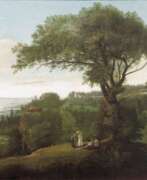

Yermolai Ivanovich Esakov (Russian: Ермолай Иванович Есаков) was a Russian painter, renowned for his landscape and battle scenes. Born in 1790, Esakov studied at the Imperial Academy of Arts under M. M. Ivanov and graduated in 1809. He gained recognition for his painting "Waterfall in a Mountainous Area," which earned him a gold medal and a position as a pensioner at the Academy.
Esakov worked as a domestic artist for the Stroganov family from 1810 to 1824. During this period, he accompanied Count P. A. Stroganov to Moldova during the Russo-Turkish War, where he painted "Russian Camp near Silistra." This work earned him the title of Academician at the Imperial Academy of Arts.
Esakov's paintings are characterized by their detailed representation of nature and historical events, showcasing his skill in capturing both the serene and the dramatic. His works are housed in various Russian museums, continuing to attract art lovers and collectors.
Stay informed about new product sales and auction events related to Yermolai Ivanovich Esakov by signing up for our updates.
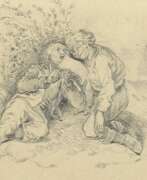

Otto Clemens Fikentscher the Elder was a German painter, draughtsman and illustrator of the Düsseldorf School. Although it is unclear whether he is related to the artist Otto Fikentscher, who was married to Jenny Fikentscher, Otto Fikentscher (the Elder) studied at the Düsseldorf Art Academy and specialised in historical painting and the depiction of horses in battle scenes. He was a member of the artists' association Malkasten and served as a war correspondent during conflicts such as the German-Danish War and the Franco-Prussian War. Fikentscher's works were reproduced in popular magazines and showed his lively and dynamic style.
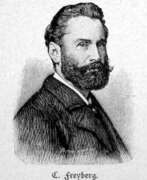

Conrad Freyberg was a German artist of the second half of the nineteenth and early twentieth centuries. He is known as a painter and sculptor.
Freyberg specialized in equestrian portraits and group portraits of horsemen, combining realistic likeness with delicate rendering. Inspired by the wars of 1866 and 1870-1871, the artist created battle paintings, including The Battle of Sadov and The Battle of Skalica. He later became a portrait painter and also worked in the genres of historical painting, animalistic painting and sports scenes. For his achievements, he received the title of court painter. The master was one of the creators of the bronze monument to Prince Albrecht of Prussia in Berlin's Charlottenburg district in 1901.
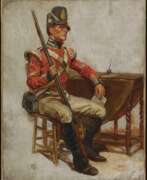

Emile Edwin Ganz is a Swiss-Belgian painter, specializing in the representation of horses and military scenes. In his early days, Ganz mainly drew military scenes, a genre that only a few 19th-century artists mastered. His masterpiece in the genre is The Attack of Scherpenheuvel, a report on the maneuvers of the grenadiers in 1894. In 1901 he entered the service of Princess Clémentine as a painter; he held this position until 1903. In 1903, he also brushed some of King Leopold II's horses. From that moment, he was no longer interested only in the horse itself, but in the regional draft horse, as well as in the people and the rural world: newspaper sellers, old horses in a depot, the harvest in the fields , beet harvest, landscape. Many of his designs for military uniforms were printed in color lithograph.
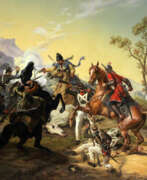

Otto Grashof was a German painter of the mid-nineteenth century. He is known as a draftsman, engraver, and portrait painter. He also did historical painting, battle-painting, animal studies, and landscape art. Grashof is considered one of the founders of Chilean painting.
Grashof went to St. Petersburg in 1838, where he carried out portrait commissions for the aristocracy, and some of his works ended up in the collection of Emperor Nicholas I. Later he visited Chile as well as Brazil. He held the titles of "painter to the Russian emperor and Brazilian court painter."
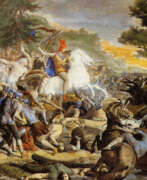

Friedrich Gunkel was a German painter. Gunkel studied at the Academy in Kassel. Here he was a student of Ludwig Emil Grimm and Friedrich Wilhelm Müller and was soon considered the best student in the drawing class. He went to Berlin and worked in the studio of Peter von Cornelius as his assistant. From May 9, 1847, he lived in Rome as a German Roman and became a member of the German Association of Artists. In 1856 he formed a community with the sculptors Gustav Kaupert and Heinrich Gerhardt and the painter Heinrich Dreber. Gunkel's most famous work was the Hermannsschlacht, a monumental history painting that the Bavarian King Maximilian II had commissioned in 1857 for the Maximilianeum and that Gunkel completed in Munich between 1862 and 1864. Destroyed in World War II, it survives only in photographs and reproductions.
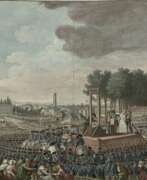

Isidore Stanislas Henri Helman was a French painter and engraver.
Among other works, Helman published an abridged version of the album Conquests of the Emperor of China, which was originally printed in an edition of only 200 copies, almost all of which were sent to Emperor Qianlong. Helman developed an interesting style of depicting Chinese art and Chinese subjects aimed at a European audience.
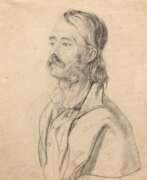

Carl Adolph Heinrich Hess was a German animalist, battalionist and teacher. He studied the works of the old masters at the Dresden Gallery.
Carl Adolph Heinrich Hess travelled extensively in Russia, Hungary, Turkey and Britain, studying different breeds of horses and achieved mastery in their portrayal.
He lived in Vienna from 1808, where he taught at the Academy of Fine Arts. In 1825 he published a collection of life-size lithographs of horse heads.
He was an honorary member of the Berlin Academy of Arts.
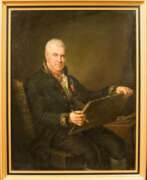

Mikhail Matveevich Ivanov (Russian: Михаил Матвеевич Иванов) was a Russian painter and watercolorist, born in 1748 in St. Petersburg. He is recognized for his landscape and battle scene paintings. Ivanov's early training was at the Imperial Academy of Arts, where he studied under Ivan Groot and later, Jean-Baptiste Le Prince in Paris. His works often depicted detailed landscapes and significant historical events.
Ivanov earned acclaim for his watercolors and drawings, many of which are housed in the State Russian Museum and the Hermitage Museum. Notable works include "View of Three Churches Against the Backdrop of Mount Ararat" and "Russian Fleet in the Bosphorus Strait".
Collectors and art enthusiasts highly regard Ivanov's contribution to Russian art, particularly his ability to capture the essence of the landscapes and historical moments of his time. To stay updated on new works and auction events related to Mikhail Matveevich Ivanov, sign up for our updates.
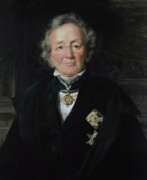

Adolph Jebens was a German painter of the mid-nineteenth century. He is known as a portrait painter and battle-painter.
Jebens moved to Russia in 1844 and became a teacher of painting at the Drawing School of the Imperial Society for the Encouragement of Arts. He created several portraits commissioned by His Imperial Majesty's Cabinet, including a portrait of Emperor Nicholas I. The artist was especially famous for his series of paintings devoted to the Russian army, of which 137 canvases are known. His works are represented in various museums, including the Hermitage, the Russian Museum, imperial palaces and many museums in Germany and Poland.
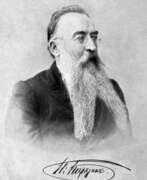

Nikolay Nikolaevich Karazin (Russian: Николай Николаевич Каразин) was a Russian military officer, painter, and writer, known for his depictions of wars and exotic places. Born in 1842 in Kharkov (now Ukraine), Karazin came from a family of prominent intellectuals, including his grandfather Vasily Karazin, who founded Kharkiv University.
Karazin's career began in the military, where he participated in campaigns against the January Uprising in Poland and in Central Asia. His firsthand experiences in battles, such as the 1868 Bukhara campaign and the 1873 Khiva campaign, greatly influenced his later work as a painter and writer. After retiring from the military, he focused on creating large canvases depicting military actions in Turkestan, as well as writing numerous adventure and ethnographic stories and novels.
Karazin's works, which include "In the Distant Confines" (1875) and "From Orenburg to Tashkent" (1886), reflect his deep engagement with the landscapes and cultures of Central Asia. His children's book "Cranes Flying South" remains popular for its vivid storytelling and illustrations. Karazin also contributed significantly to the visual arts, participating in early designs for the Moscow Metro and becoming an academician of the Imperial Academy of Arts in 1904.
To stay updated on new product sales and auction events related to Nikolay Karazin's works, sign up for our updates. This subscription will keep you informed about the latest opportunities to acquire pieces of his illustrious legacy.
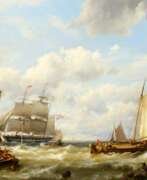

Johannes Hermanus Koekkoek was a Dutch painter and draughtsman. Following his education, he worked as an art teacher, but soon decided to become a free-lance artist. In 1826, he moved to Durgerdam, near Amsterdam, where he would live and work until 1833. He initially combined seascapes and cityscapes but, in his later years, focused entirely on ocean scenes. Much of his inspiration came from the painters of the Dutch Golden Age. His style was essentially Realistic, but alos showed elements of the newer Romantic aesthetic. Rather than merely paint ships, he also learned as much as he could about the different types.
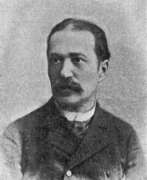

Pavel Osipovich Kovalevsky (Russian: Павел Осипович Ковалевский) was a Russian painter renowned for his battle scenes and genre paintings. Born in Kazan in 1843, Kovalevsky studied at the Imperial Academy of Arts in St. Petersburg under the mentorship of B.P. Villevalde. His early work earned him multiple accolades, including gold medals for significant paintings such as "Persecution of Turkish Foragers by Cossacks" and "First Day of the Battle of Leipzig in 1813".
Kovalevsky’s artistic journey took him across Europe as an academic scholar, visiting cities like Munich, Vienna, Rome, and Paris. His experiences and observations during these travels significantly influenced his work. During the Russo-Turkish War of 1877–1878, he served as a war artist attached to the Russian Army, documenting the campaign under Grand Duke Vladimir Alexandrovich. His notable works from this period include "The Staff of the 12th Battalion in Bulgaria" and "Captured Turks," which are housed in the State Russian Museum.
In addition to his battlefield illustrations, Kovalevsky contributed to the education of future artists by leading the workshop for military painting at the St. Petersburg Academy of Arts from 1897 until his death in 1903. His legacy includes numerous works depicting historical and military scenes, which continue to be celebrated for their detailed representation and historical accuracy.
For collectors and enthusiasts, keeping abreast of new acquisitions and auction events featuring works by Pavel Osipovich Kovalevsky is essential. Sign up for updates to stay informed about the latest sales and exhibitions related to his art.
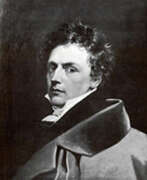

Johann Peter Krafft was a German and Austrian painter of the mid-nineteenth century. He is known as a painter and graphic artist who specialized in genre, battle, portraiture and history painting. Krafft is believed to have had a significant influence on Austrian painting and was a leading portraitist of the Neoclassical style in Vienna. He later influenced the development of genre painting during the Viennese Biedermeier period.
Krafft co-founded the Vienna Artists' Union and was elected to the council of the Vienna Academy of Art in 1835. The artist also acted as a consultant for the protection of cultural monuments at Karlstein Castle in Bohemia.
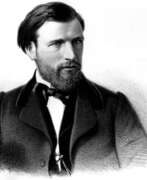

Lev Feliksovich Lagorio (Russian: Лев Феликсович Лагорио) was a Russian painter known for his exquisite seascapes and coastal landscapes. Born in 1827 in Feodosia, Crimea, Lagorio's Italian heritage and Russian upbringing greatly influenced his artistic style.
Lagorio's paintings are celebrated for their vibrant use of color and meticulous attention to detail, capturing the dynamic beauty of the sea and coastal environments. His works often depict serene seascapes, bustling ports, and dramatic coastal scenes, showcasing his ability to convey both tranquility and movement in nature. His technique involved capturing the subtle interplay of light and shadow, giving his paintings a lifelike quality.
Some of Lagorio's notable works include "View of the Caucasus Mountains from the Sea" and "Storm on the Black Sea," which are housed in prestigious institutions such as the State Russian Museum in St. Petersburg. Collectors and art enthusiasts highly value his contributions to maritime art.
For those interested in exploring the works of Lev Feliksovich Lagorio, signing up for updates on upcoming auctions and sales can provide exclusive access to new opportunities. Stay informed about the latest offerings by subscribing to our newsletter focused on Lagorio's masterpieces.
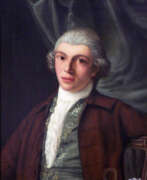

Thomas Luny was an English artist and painter, mostly of seascapes and other marine-based works. At the age of eleven, Luny left Cornwall to live in London. There he became the apprentice of Francis Holman, a marine painter who would have a great and long lasting artistic influence on Luny.
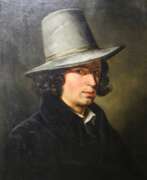

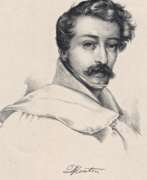

Dietrich Heinrich Maria Monten was a German painter and lithographer.
Dietrich studied painting at the Düsseldorf Art Academy and the Academy of Fine Arts in Munich. He mastered various techniques and took on any genre, but his main subjects were historical, battle and genre themes. He created many large-scale works on important historical events. During his lifetime, Dietrich Monten, together with his colleague Heinrich Ambros Eckert (1807-1840) and others, published more than 1,000 illustrations of the uniforms of European armies in the form of color lithographs collected in separate volumes.
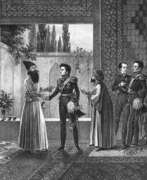

Vladimir Ivanovich Moshkov (Russian: Владимир Иванович Мошков) was a Russian painter born in 1792 in Moscow. He was known for his detailed battle scenes and landscapes. At nine, he became a student at the Imperial Academy of Arts, where he excelled under the guidance of M. M. Ivanov. In 1812, he graduated with high honors, receiving a large gold medal for his painting "The Battle of Romans and Latins."
Moshkov gained fame with his 1815 painting of the Battle of Leipzig, which depicted the historical encounter between Russian and Prussian armies. This work earned him the title of academician. His career included diplomatic missions, such as his 1816–1818 trip to Persia, where he created notable works like "The Solemn Entry of Count Paskevich into Tabriz."
Throughout his life, Moshkov produced many significant paintings reflecting Russian military history and his travels. His legacy endures through the continued appreciation of his works in museums and galleries.
To stay updated on new product sales and auction events related to Vladimir Ivanovich Moshkov, sign up for our updates today.
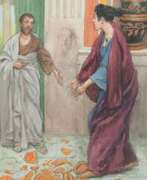

Felician Myrbach, an Austrian artist renowned for his multifaceted contributions to the art world, was a significant figure in the late 19th and early 20th centuries. Born in Zalesciki, Ukraine, in 1853, Myrbach's career spanned various roles, including painter, illustrator, and graphic artist. His educational journey included teaching at the cadet school in Vienna and studying at the Vienna Academy. In 1881, he moved to Paris to further his career as an illustrator, eventually becoming a professor of Illustration at the Vienna School of Arts and Crafts from 1899 to 1905.
Felician Myrbach's artistry was not confined to one location; he lived and worked in multiple European cities, including Paris, Barcelona, and near Bilbao, before passing away in Klagenfurt, Austria, in 1940. His works were displayed in prestigious exhibitions, such as the Vienna Secession shows and the Royal Watercolour Society in Belgium, showcasing his versatility and the broad appeal of his art.
Felician Myrbach's contributions to book illustration were notable, with his work appearing in various publications, such as Alphonse Daudet’s "Wives of Men of Genius" and "Trente ans de Paris à travers ma vie et mes livres." His distinctive signature can be found on many illustrations, underscoring his significant role in the art of book illustration during his time.
For collectors and experts in art and antiques, Felician Myrbach's works offer a glimpse into the vibrant art scene of his era, reflecting the cultural and artistic movements of the time. His legacy continues to be celebrated and studied, making him a pivotal figure in the history of European art.
For those interested in staying updated on Felician Myrbach, subscribing to updates can be a valuable way to stay informed about new product sales and auction events related to his work. This subscription service is dedicated to providing focused updates, ensuring that enthusiasts and collectors are well-informed about opportunities related to Myrbach's enduring legacy.
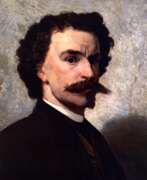

Victor Nehlig was a French-American painter. Born in Paris in 1830, Nehlig studied painting under Léon Cogniet and Abel de Pujol. In 1850, he moved to the United States, where he would live and work for the next 22 years, interrupted only by a brief stay in Havana, Cuba. During his time in the United States, Nehlig opened a studio in New York City and painted a variety of works in the academic style, often demonstrating his prowess at depicting the human figure. Nehlig returned to his native France in 1872, two years after being elected an academician in the National Academy of Design and shortly after his studio and many of his reference materials were destroyed in a devastating fire. While Nehlig was relatively well known among art enthusiasts during his time, his work has seen less attention in subsequent years.[3] He frequently painted interpretations of American history, taking a special interest in scenes from the American Civil War, the effects of which he witnessed firsthand.
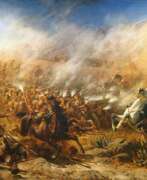

Adolph Northen was a German painter of the 19th century, a representative of the Düsseldorf school of art. He is known as a master of historical, genre and battle paintings.
Northen was particularly famous for his works in the battle genre, centered on the events of the Napoleonic Wars. One of his most famous works, Napoleon's Retreat from Moscow, illustrates the failure of Napoleon's invasion of Russia. Another famous work is "The Attack of the Prussians." These paintings convey the drama and epic atmosphere of the military events of the time.
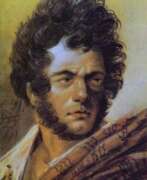

Aleksander Orłowski (Russian: Александр Осипович Орловский), a renowned Polish painter and sketch artist, was born on March 9, 1777, in Warsaw, within the Polish-Lithuanian Commonwealth. His journey into the arts began under challenging circumstances; he was the son of a tavern-keeper and his family was not wealthy. His early promise in art was nurtured by noble patron Izabela Czartoryska, who financed his initial education under the guidance of artist Jan Piotr Norblin.
Orłowski's artistic journey intersected with his military service during the Kościuszko Uprising, a major revolt against Imperial Russia and Prussia in 1794. This period of conflict significantly influenced his later works, which often depicted military scenes and the daily life of soldiers. After the partitions of Poland, Orłowski moved to Saint Petersburg in 1802, where he became a seminal figure in the development of lithography in the Russian Empire.
His oeuvre includes a wide array of subjects, from battle scenes to cultural depictions of everyday life in both Poland and Russia. Notable works such as "Battle Scene" and "Cossack Fighting Off A Tiger" showcase his skill in capturing dynamic movement and drama. His works are preserved in esteemed institutions such as The Russian Museum and The Tretyakov Gallery, highlighting their historical and artistic value.
Orłowski's impact extended beyond the canvas; he was also mentioned in literary works by notable authors like Adam Mickiewicz and Alexander Pushkin, which underscores his cultural significance in the 19th century.
For collectors and experts in art and antiques, Aleksander Orłowski's works represent a crucial segment of Eastern European art history. To stay informed about new discoveries or auction events related to his works, consider subscribing for updates. This subscription ensures you receive timely information tailored to your interests, directly relating to new sales and significant events around Orłowski's art.
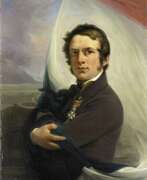

Jan Willem Pieneman was a painter from the Northern Netherlands. In 1805 he was appointed as drawing instructor at the artillery and engineering training centre in Amersfoort. He was particularly noted for his paintings depicting events from the history of the United Kingdom of the Netherlands. His fame was established by a painting he did at the Villa Welgelegen, depicting the heroic acts of the Prince of Orange at the Battle of Quatre Bras, followed by a painting of the Battle of Waterloo. The latter found favor with the Duke of Wellington, who invited him to England, on several occasions, to do portraits. In 1820 he was appointed as first director of the Royal Academy of Fine Arts (Koninklijke Academie voor Schone Kunsten) in Amsterdam. He played an important role as mentor and tutor to a group of young artists.
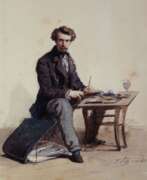

Isidore-Alexandre-Augustin Pils, a prominent French academic painter born in 1815, is renowned for his religious and military-themed artworks. His journey in art began under the tutelage of Guillaume Guillon-Lethière and later, François-Édouard Picot. Pils' prowess led him to win the prestigious Prix de Rome in 1838 with his history painting "St. Peter Healing a Lame Man at the Door of the Temple."
Pils' early works were religious in nature, but his experiences traveling with French troops in Crimea shifted his focus to military and nationalistic subjects. His most famous work from this period is "Rouget de L'Isle Singing La Marseillaise," currently housed in the Musée historique de Strasbourg. During the Franco-Prussian War of 1870, he produced many impactful military scenes.
Apart from his remarkable paintings, Pils also contributed to the architectural beauty of Paris. He painted part of the ceiling of the grand staircase of the Palais Garnier, consisting of four panels: The Gods of Olympus, Apollo in His Chariot, Triumph of Harmony, and Apotheosis of the Opera. These works were completed in the year of his death, 1875.
Pils' role as an educator was equally significant. In 1863, he was appointed a professor of painting at the École des Beaux-Arts. His influence extended to numerous students who later became notable artists themselves.
Some of Pils' other notable works include a preparatory study for the decorative projects in the Paris churches of Saint-Eustache and Sainte-Clotilde, titled "Lamentation," reflecting the popular Christian theme during the 19th century.
Isidore Pils passed away in 1875 in Douarnenez and was buried in Père Lachaise Cemetery. His legacy continues to be celebrated by art collectors and enthusiasts, particularly those interested in French academic art and its rich history of religious and military representations.
For art collectors and enthusiasts keen on exploring the legacy of French academic painting and Isidore Pils' contributions, we encourage you to connect with us. By signing up for our newsletter, you'll receive exclusive updates on sales, auctions, and events featuring works of Isidore Pils. Don't miss the opportunity to delve deeper into the world of this distinguished artist.
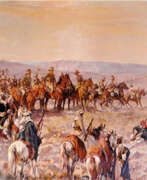

Harold Septimus Power, usually known as H. Septimus Power or H. S. Power, was a New Zealand-born Australian artist, who was an official war artist for Australia in World War I. He exhibited in 1899 with the Melbourne Art Club and soon after moved to Adelaide where he worked as an illustrator and political cartoonist. In 1904, he was commissioned by the trustees of the Art Gallery of South Australia to paint an animal scene. He was a member of the Royal Institute of Oil Painters and the Society of Animal Painters. He also exhibited at the Royal Academy of Arts. After war broke out in the summer of 1914, the Australian government appointed official war artists to depict the activities of the Australian Imperial Force in the European theater of war. Power was appointed in 1917 and was attached to the 1st Division, A.I.F. from September to December of that year and then again in August the following year. Official War Artist during the First World War and was renowned for his depiction of animals, in particular horses, on the field of battle.
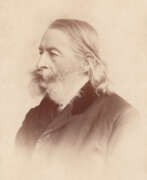

Carl Rechlin was a German painter of the mid-nineteenth century. He is known as a battalist and genre painter who created a number of paintings on military themes commissioned by the Prussian royal family and the Russian imperial court.
Among the commissioned works, Rechlin created a painting commemorating the opening of the Alexander Column in St. Petersburg, which he himself observed in 1834. Another important work was dedicated to the parade in Kalisz and depicted the scene of maneuvers conducted by Prussia and Russia in 1835. In 2013, Russia issued a commemorative stamp depicting Rechlin's painting "The Attack of the Life Guards at Leipzig on October 4, 1813" in honor of the 200th anniversary of the Battle of Leipzig.
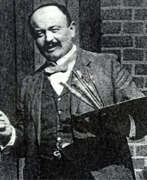

Carl Röchling was a German painter and illustrator known for his depictions of military and military-historical subjects. He gained fame for his portrayals of battle scenes, particularly those depicting Prussian army victories during the Franco-Prussian War.
Röchling collaborated with other artists such as Georg Koch and Eugen Bracht on projects like the panorama of the Battle of Chattanooga. He also worked alongside Richard Knötel and Woldemar Friedrich, illustrating popular children's books such as "Der Alte Fritz in 50 Bildern für Jung und Alt" (1895) and "Die Königin Luise in 50 Bildern für Jung und Alt" (1896).
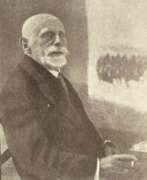

Jan Bogumil Rosen (Russian: Ян Богумил Розен) was a Polish painter born on October 16, 1854, in Warsaw, and passed away on November 8, 1936, in the same city. He specialized in battle scenes and was known for his meticulous attention to detail, especially in depicting horses and military uniforms.
Rosen began his artistic education under the guidance of Franciszek Kostrzewski and later studied at the Academy of Fine Arts in Munich. He also trained under renowned painters Jean-Léon Gérôme and Isidore Pils at the Académie des Beaux-Arts in Paris. Throughout his career, Rosen's work was exhibited widely and garnered significant attention, particularly in Munich and Warsaw. One of his notable works, "Contest of Carriages at the Ujazów Castle Square," exemplifies his skill in portraying dynamic scenes with great precision.
In addition to his battle scenes, Rosen also produced genre paintings and portraits. His work received recognition from various prestigious institutions, and he served as a court painter for Tsar Alexander III of Russia. Despite spending much of his career abroad, Rosen's work remained deeply connected to Polish themes and history.
For collectors and enthusiasts interested in Jan Bogumił Rosen's works, subscribing to updates about new product sales and auction events is highly recommended. Stay informed about opportunities to acquire pieces by this masterful artist.
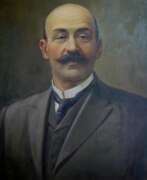

Franz Roubaud (Russian: Франц Алексеевич Рубо) was a Russian painter, known for his panoramic paintings and battle scenes. Born in Odessa in 1856, Roubaud studied at the Imperial Academy of Arts in St. Petersburg and furthered his education in Munich. His works are celebrated for their meticulous detail and dynamic composition.
One of his most famous works is the "Siege of Sevastopol," a monumental panorama depicting a key event from the Crimean War. This masterpiece is housed in the Panorama Museum in Sevastopol and stands as a testament to Roubaud's ability to convey historical grandeur and emotional intensity.
Roubaud's contributions to Russian art extend beyond his canvases, as he was also a respected professor at the Academy of Arts in St. Petersburg. His legacy continues to influence modern Russian painters, and his works are sought after by collectors and art enthusiasts worldwide.
Stay updated on new product sales and auction events related to Franz Roubaud (Rubo) by signing up for our newsletter. Don’t miss the chance to own a piece of history!


Alexander Ivanovich Sauerweid (Russian: Александр Иванович Зауервейд) was a Baltic German painter born on February 19, 1783, in the Duchy of Courland and Semigallia. He is best known for his detailed battle scenes and military portraits, which earned him significant acclaim in the 19th century. His early education in the arts took place at the Dresden Academy of Fine Arts, where he developed a strong foundation in painting.
Sauerweid's talent for depicting military subjects brought him to the attention of prominent figures of his time, including Napoleon and Tsar Alexander I of Russia. Invited to Saint Petersburg in 1814, Sauerweid became the official painter of the Russian General Staff and later a professor at the St. Petersburg Imperial Academy of Arts. His role involved teaching battle painting and producing works that depicted various military uniforms and scenes, a specialty that set him apart from his contemporaries.
Among his notable works are "The Battle of Leipzig" and "The Siege of Varna," which showcase his ability to capture the dynamism and drama of military engagements. Many of Sauerweid's paintings are housed in Russian Imperial Palaces, reflecting their historical and artistic value.
For collectors and enthusiasts, keeping abreast of Alexander Ivanovich Sauerweid's works is essential. Subscribe to our updates to be the first to know about new product sales and auction events related to this distinguished artist. Sign up now!
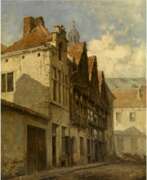

Hendrik Frans Schaefels or Henri François Schaefels, also known as Rik Schaefels was a Belgian Romantic painter, draughtsman and engraver known for his seascapes, cityscapes, genre paintings, landscapes with figures and history paintings. He worked in the Romantic style popular in Belgium in the mid nineteenth century and was highly esteemed in Europe for his representations of historic naval battles.
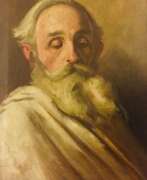

Wilhelm Schreuer was a German painter; associated with the Düsseldorfer Malerschule.
Most of his works were created with a distinctive technique, involving diluted colors on a damp surface, applied to glued paper; a method that makes major corrections almost impossible. The resulting surface is smooth as glass. Often, the effect is nearly monochromatic. Although he painted a wide variety of subjects, scenes from inns, restaurants, dance halls, and various events were obviously his favorites.
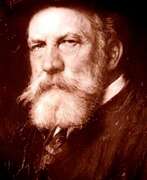

Adolf Schreyer was a German painter of the second half of the 19th century. He is known as an orientalist, landscape, battle and animalist, a representative of the Düsseldorf School of Art. Schreyer served in the Austrian army and participated in a military expedition to Wallachia during the Crimean War.
Schreyer also traveled to Egypt, Syria, and Algeria, where he painted many Orientalist paintings as well as images of horses with riders. His paintings of battle scenes, including events of the Crimean campaign, as well as genre paintings and landscapes, are characterized by vivid colors, vigorous movement, and drama.


Christian Jacob Sell, auch Christian Sell der Ältere, war ein deutscher Maler der Düsseldorfer Schule. Er studierte an der Düsseldorfer Kunstakademie bei Ferdinand Theodor Hildebrandt und Friedrich Wilhelm von Schadow und spezialisierte sich auf militärische Genre- und Schlachtszenen. Sein Sohn Christian Sell der Jüngere wurde ebenfalls Maler.
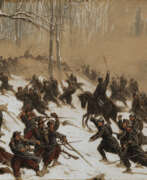

Christian Wilhelm Sell, also Christian Sell the Younger, was a German battle and military painter of the Düsseldorf School.
Like his father, Christian Sell the Elder, he created numerous battle and war depictions, especially from the Franco-Prussian War.
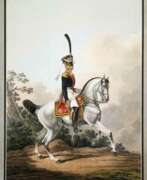

Samuel Petrovich Shiflyar (Russian: Самуил Петрович Шифляр) was a Russian painter, draughtsman, engraver, and lithographer, known for his significant contributions to portraiture and battle scenes. Born in 1786, Shiflyar initially worked for the Imperial Porcelain Factory, where he honed his skills in detailed and delicate artwork. He later joined the Military Topographic Depot of the Russian Imperial Army, where he produced numerous lithographs depicting military events and figures.
Shiflyar’s works are distinguished by their meticulous attention to detail, especially in military uniforms and battle scenes, making them valuable historical records. His piece "The Storming of Izmail" is particularly noted for its vivid depiction of the famous battle. Shiflyar's art provides a window into the military history of his time, combining artistic skill with historical accuracy.
Many of his works are housed in prestigious museums, reflecting their enduring value. Shiflyar’s pioneering efforts in lithography paved the way for future generations of Russian artists.
To stay updated on new product sales and auction events related to Samuel Petrovich Shiflyar, sign up for our newsletter.
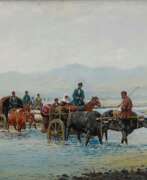

Richard Karl Sommer (Russian: Рихард-Карл Карлович Зоммер) was a Russian and Soviet artist of the late 19th and first third of the 20th centuries of German origin. He is known as a painter, graphic artist and watercolorist.
Sommer is most famous for his works created in Central Asia and Transcaucasia. He painted both domestic and battle scenes there, as well as landscapes of architectural monuments and old city neighborhoods. His paintings are characterized by clear composition and attention to detail, combining features of realism and impressionism, which made them popular among collectors and art connoisseurs.
The master was one of the founders of the Tiflis Society of Fine Arts.
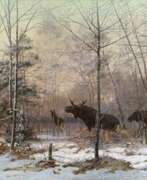

Evgeny Alexandrovich Tikhmenev (Russian: Евгений Александрович Тихменев) was a Russian artist, born in 1869 and passed away in 1934. Renowned for his depictions of natural scenes and hunting expeditions, his works encapsulate the essence of rural Russian life during his time. Tikhmenev's artwork, such as "Before the Hunt," captures moments of anticipation and interaction with nature, often featuring meticulous detail and vibrant settings.
His pieces are cherished in art circles for their historical value and their ability to convey the story of an era when hunting was not only a sport but a significant aspect of rural survival and culture. Notably, Tikhmenev's paintings have been sold at various auctions, with some pieces fetching substantial prices, highlighting their desirability among collectors and art enthusiasts.
For collectors and experts in art and antiques, Tikhmenev's works present a valuable investment, both culturally and financially. To stay updated on new sales and auction events featuring Evgeny Alexandrovich Tikhmenev’s work, signing up for timely updates is recommended, ensuring enthusiasts don't miss out on acquiring a piece of Russian art history.
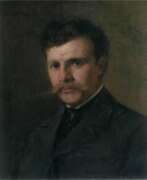

Mikhail Stepanovich Tkachenko (Russian: Михаил Степанович Ткаченко) was a late 19th- and early 20th-century Russian artist of Ukrainian descent. He is known as a painter and graphic artist who lived most of his career in France.
Mikhail Tkachenko worked as a landscape painter, marinist, and painted scenes of naval battles. For some time he was the first painter of the Main Naval Staff of the Russian Empire. Most of his works are in state collections in France, some are kept in the Central Naval Museum in St. Petersburg.
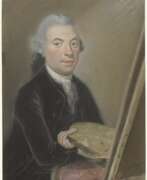

Jan van Os was a Dutch painter and a member of the renowned Van Os family of artists. He was born in Middelharnis. He was taught by Aert Schouman in The Hague, where he would spend the rest of his life. In 1773, he recorded in the painters' confraternity. Van Os is mostly known for his fruit and flower still life paintings, though he started his career painting seascapes. His floral still lifes were painted in the style of Jan van Huysum, with the flowers usually presented on a marble ledge against a green background. He was the father of artists Pieter van Os, Maria Margaretha van Os, and Georgius Jacobus Johannes van Os and grandfather to the painter Pieter Frederik van Os.
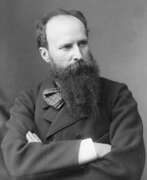

Vasily Vasilievich Vereshchagin (Russian: Васи́лий Васи́льевич Вереща́гин) was a Russian painter, known for his poignant and realistic depictions of war. He was born in 1842 in Cherepovets, Russia, and is celebrated for his dramatic and often controversial paintings that depicted the brutal realities of warfare.
Vereshchagin’s work stands out for its unflinching portrayal of the human cost of conflict. Unlike many of his contemporaries, he focused on the devastating consequences of war rather than glorifying it. His series of paintings from the Russo-Turkish War and his iconic piece, "The Apotheosis of War," are housed in prestigious institutions like the Tretyakov Gallery in Moscow and the Russian Museum in Saint Petersburg.
Collectors and art experts value Vereshchagin’s works for their historical significance and emotional depth. His paintings not only serve as powerful artistic statements but also as historical documents that provide insight into the wars of his time. For those interested in acquiring or learning more about Vereshchagin’s works, subscribing to updates about upcoming sales and auction events can be incredibly valuable.
Sign up to receive updates on new product sales and auction events related to Vasily Vasilievich Vereshchagin.
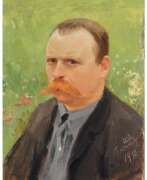

Ivan Alexeyevich Vladimirov (Russian: Иван Алексеевич Владимиров) was a Russian painter and graphic artist, known for his vivid and often stark depictions of the Russian Revolution and its aftermath. Born on January 10, 1870, in Vilnius, Vladimirov became a prominent war artist, documenting the turbulent events of early 20th-century Russia through his art.
Vladimirov's artistic journey began with formal studies at the Vilna Drawing School and later at the St. Petersburg Academy of Arts. His early works focused on battle scenes and everyday life, showcasing his realistic style and attention to detail. During the Russo-Japanese War and World War I, he served as an artist-correspondent, capturing the brutal realities of war.
His most notable works were created during and after the Russian Revolution. Paintings like "On the Streets of Petrograd" and "Hungry Times in Petrograd" portray the harsh conditions and social upheaval of the era. Vladimirov's art provides a critical lens on the revolution, illustrating both the triumphs and tragedies of the period. His works are housed in various collections, including the Williamson Art Gallery & Museum.
To stay updated on new exhibitions and auction events related to Ivan Alexeyevich Vladimirov, sign up for our newsletter. You'll receive timely alerts on new product sales and special events related to this influential artist.
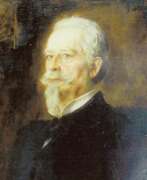

Otto von Faber du Faur was a German officer and painter of the second half of the 19th century. He is best known for his skillful depictions of battles. His works combine elements of impressionism and expressionism.
Faber du Faur was considered one of the leading German battle painters of his time, who devoted himself to historical painting. He chose the Napoleonic wars and military conflicts of his time as his main subjects, as well as scenes from Eastern life, which he was inspired by a trip to Morocco. His paintings are characterized by dynamic composition, dramatic gestures of figures and high contrast of colors. In the late period of his work, the artist paid special attention to skillfully applied color, which became the main expressive means in his works.
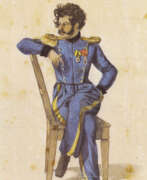

Christian Wilhelm von Faber du Faur was a German battle painter of the first half of the 19th century, the father of another famous battle painter, Otto von Faber du Faur. He is known for his lithographs of the events of the War of 1812.
Faber du Faur senior, who participated in the military campaign, left a series of detailed drawings in pencil, ink and watercolor depicting Russian landscapes, soldiers, crossings and battle scenes. These drawings were first published in 1816, and in 1827 the series was colored and engraved. Their historical and artistic significance is recognized by researchers of the artist's work. In the 1840s the series was published under the title "Sheets from my portfolio, sketched on the spot during the campaign in Russia".
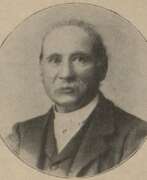

Carl von Häberlin was a painter from Württemberg. He received his initial training at the National Academy of Fine Arts in Stuttgart and studied at the Academy of Fine Arts in Düsseldorf from 1852 to 1856. Häberlin then moved to Stuttgart and became a prolific illustrator. He was professor of genre painting at the Academy of Applied Arts in Stuttgart from 1868 to 1885. Häberlin also worked on large-scale murals on the Dominican island in Konstanz from 1878 to 1894, depicting scenes from the island's history. He received the Medal of Honor of the Order of the Crown of Württemberg in 1901.
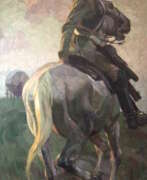

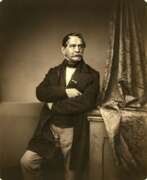

Peter von Hess was a Bavarian painter of the 19th century. He is known as a court battle-painter and master of historical painting.
Peter von Hess took part in the military campaign of 1813-1814 against Napoleon and after a tour of Vienna, Switzerland and Italy founded his workshop in Munich. At first he depicted small scenes from the life of soldiers, and then he moved on to creating large battlefield paintings. In 1839, the artist visited Russia to create a series of paintings of the main battles of 1812 commissioned by Emperor Nicholas I.
Hess's works are notable for their vivid composition, fine characterization of figures and drama.
